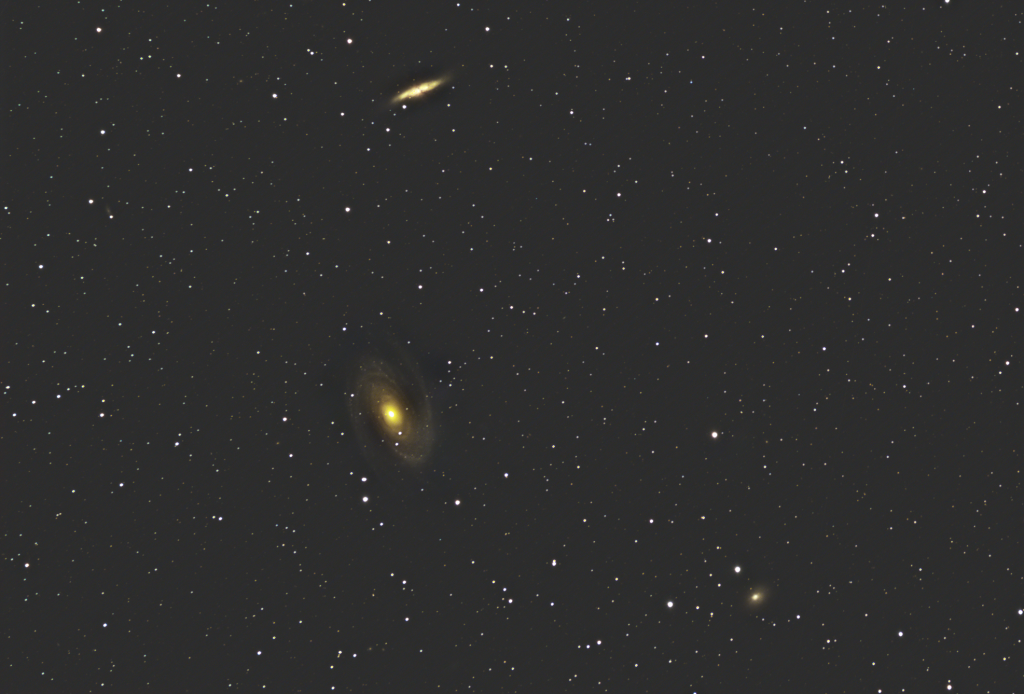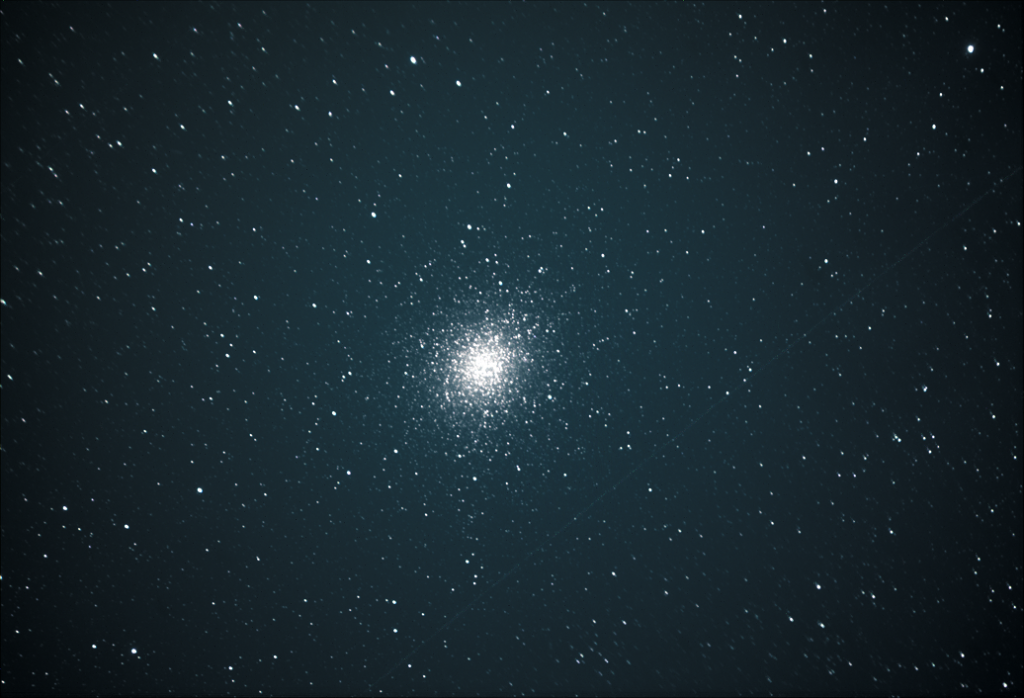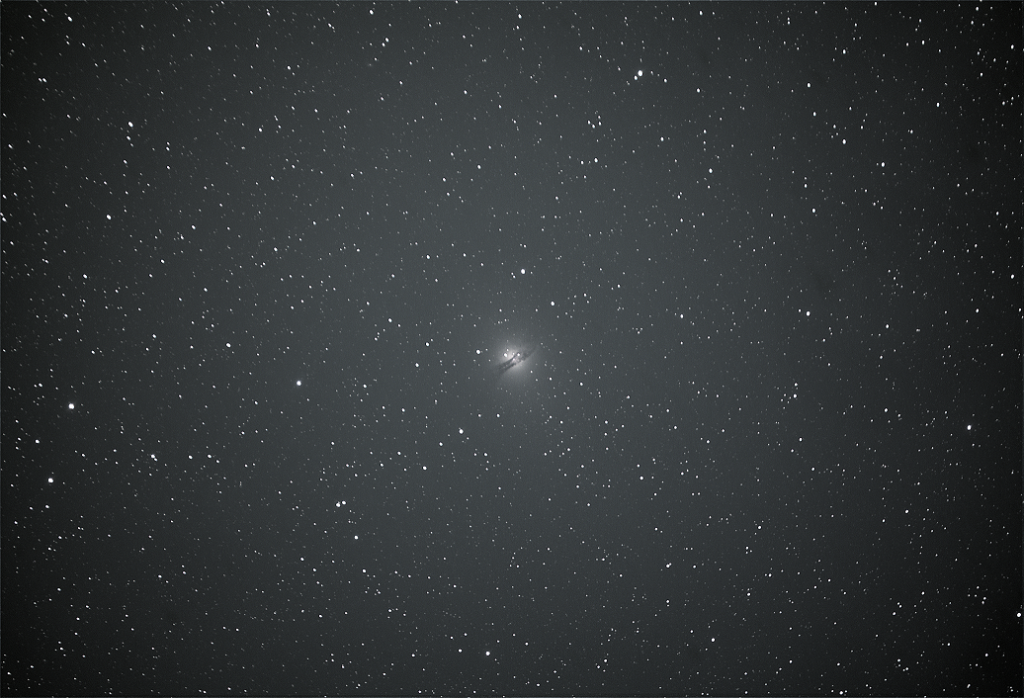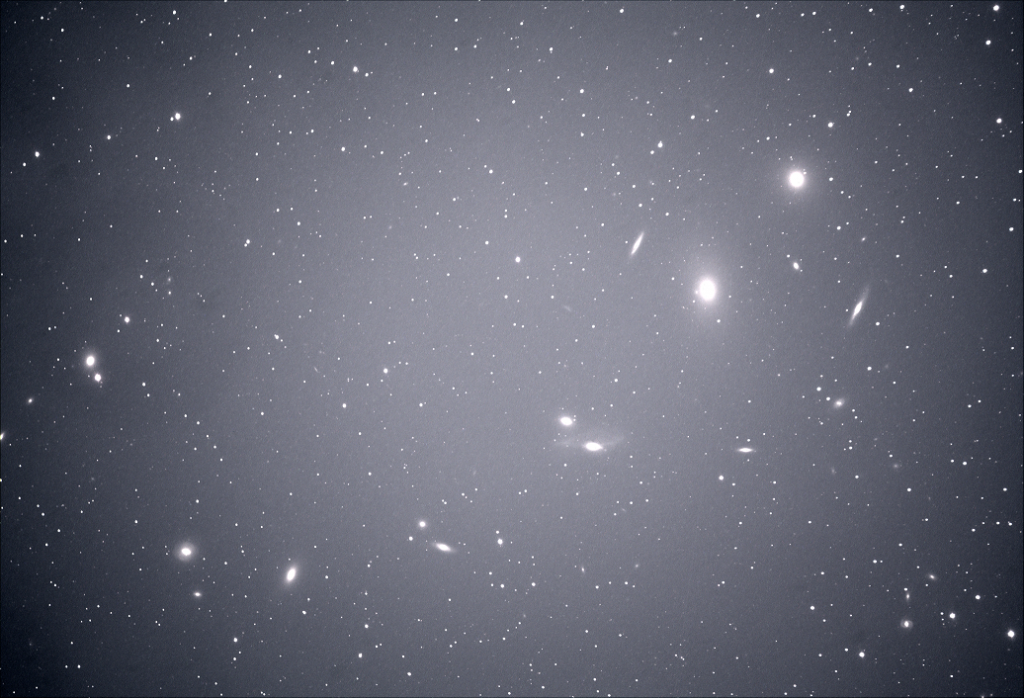Friday night was my second night out with my 11″ SCT (Elf) and the new Hyperstar adapter. Clouds, heat and humidity made things a challenge but I managed to get this before packing it up. First, I spent a while collimating the Hyperstar. This was not too hard and I hope it will stay but we’ll see. A few months ago, I learned that my CGEM mount has as polar alignment routine, not just the common star alignment, and using this gave me very little drift over the evening.
Anyway, I queued up 120 30 second images with what is essentially a 532mm f/1.9 telephoto lens. Unfortunately after about 40 minutes it clouded over and I had to cut it short. Also I found airplanes or satellites in a few of the images so I wound up with 69 images to combine. The largest galaxy is M81 or Bode’s Nebula. Above it is M82, the Cigar Galaxy. In the lower right and not very impressive in comparison is NGC 3077, the Garland Galaxy. The Hyperstar is used for wide angle small scale imaging so we don’t see a lot of detail here. Horizontally this image is about 4 times the width of the Moon.




